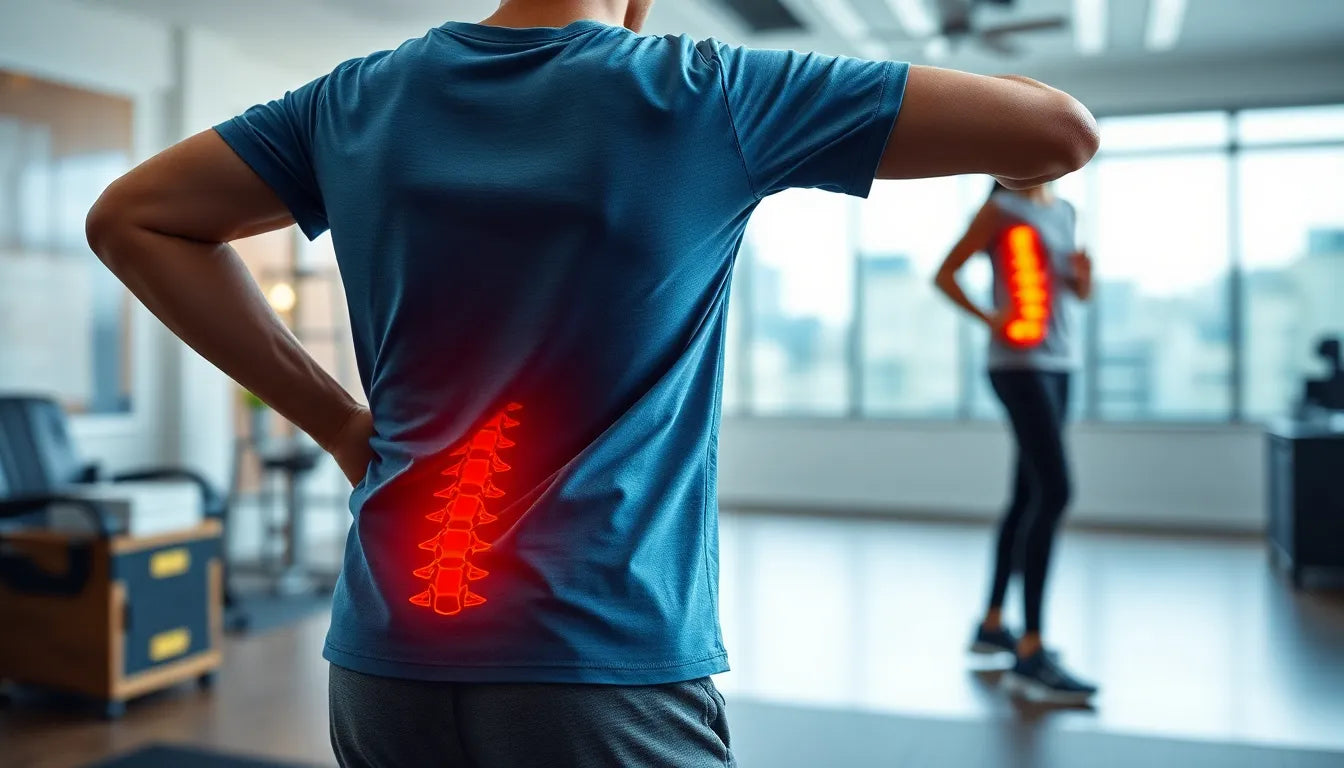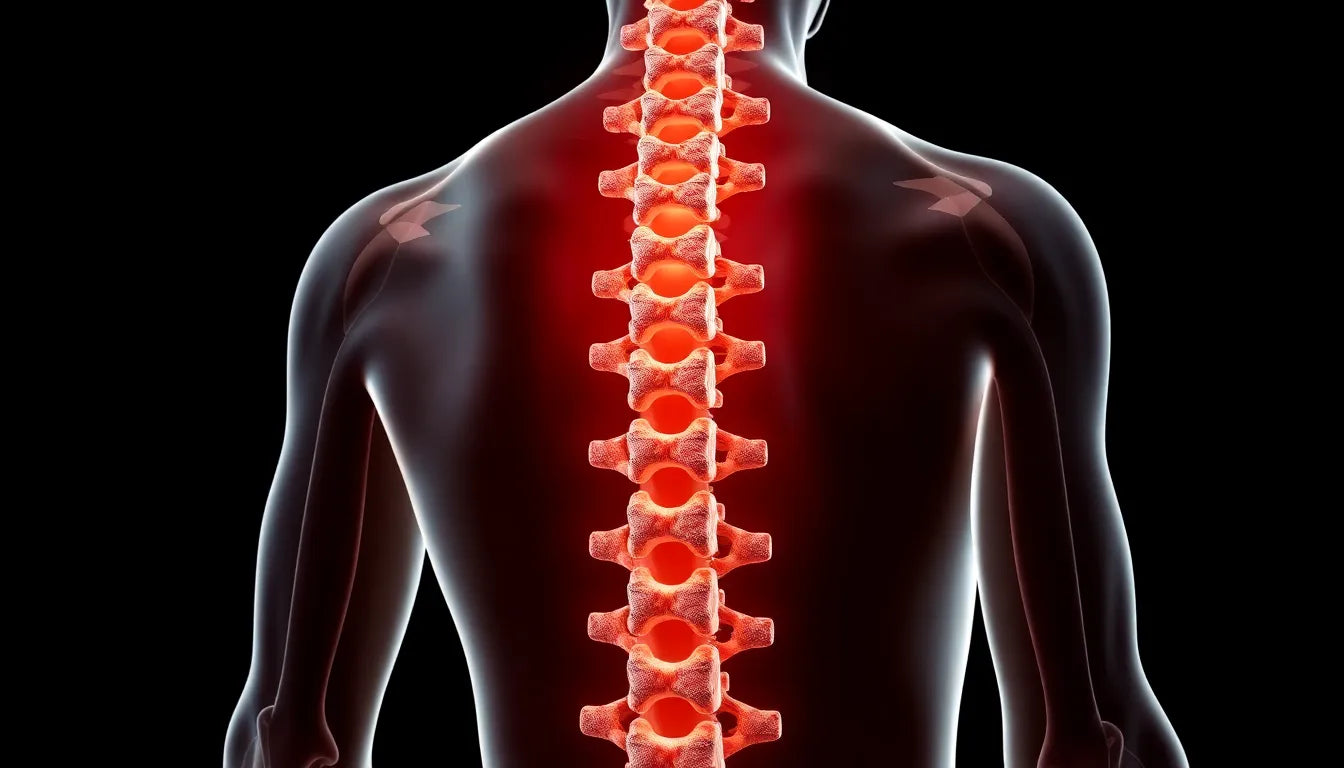Lower back pain is a common ailment that affects millions of people worldwide, often arising from a variety of causes. Among these, a herniated disc is a frequent yet frequently misunderstood culprit. This condition can significantly impact one's quality of life, but early recognition of its symptoms can lead to better treatment outcomes and improved daily functioning. Understanding the signs of a herniated disc in the lower back is crucial for timely intervention and management.
what is a herniated disc?
A herniated disc, also known as a slipped or ruptured disc, occurs when the soft, gel-like center of an intervertebral disc pushes through a crack in its tougher exterior casing. This condition is particularly common in the lumbar region, or lower back, where the spine bears much of the body's weight and is subject to significant stress and movement. The intervertebral discs act as cushions between the vertebrae, providing flexibility and absorbing shock during movement. When a disc herniates, it can press on nearby nerves, leading to pain and discomfort.
why identifying symptoms early matters
Recognizing the symptoms of a herniated disc early is essential for effective management and prevention of further complications. Early detection can lead to more conservative treatment options, such as physical therapy, ergonomic adjustments, and lifestyle modifications, potentially avoiding the need for surgical intervention. Moreover, understanding the symptoms helps differentiate a herniated disc from other conditions that may present similarly, ensuring that individuals receive the appropriate care and guidance.
By being informed about the signs of a herniated disc in the lower back, individuals can take proactive steps to address their condition, seek medical advice when necessary, and explore various treatment options that can alleviate symptoms and enhance their quality of life.
primary symptoms of a herniated disc in the lower back
The symptoms of a herniated disc in the lower back can vary from mild to severe, depending on the extent of the disc herniation and its impact on surrounding nerves. One of the most prevalent symptoms is lower back pain. This pain often serves as the initial indicator of a herniated disc. It may present as a sharp, stabbing sensation or as a persistent, dull ache. The pain can fluctuate in intensity and may worsen with certain activities, such as bending, lifting, or prolonged sitting.
Another common symptom associated with a herniated disc is sciatic pain, or sciatica. This condition occurs when the herniated disc compresses or irritates the sciatic nerve, which is the longest nerve in the body. Sciatic pain typically manifests as a sharp, shooting pain that radiates from the lower back through the buttock and down one leg. This pain can be debilitating and may be accompanied by a tingling or burning sensation.
In addition to sciatic pain, individuals with a herniated disc may experience radiating pain that extends beyond the lower back. This pain can travel down the buttocks, thigh, and calf, sometimes reaching as far as the foot. It is important to note that the path of this radiating pain can vary, often depending on which nerve is affected by the disc herniation.
additional symptoms of a herniated disc
Beyond pain, a herniated disc in the lower back can lead to a range of other symptoms that impact daily life. Muscle weakness is one such symptom, often affecting the legs and making it difficult for individuals to walk or stand for extended periods. This weakness results from nerve compression, which disrupts the normal functioning of the muscles.
Another symptom commonly reported is numbness or tingling in the affected leg and foot. These sensations arise from the pressure exerted by the herniated disc on the nerves, disrupting normal sensory signals. As a result, individuals may experience a pins-and-needles feeling or a loss of sensation in the affected areas.
Additionally, muscle spasms may occur in the back muscles as a response to the irritation and inflammation caused by the herniated disc. These involuntary contractions can be painful and may further limit mobility. Alongside muscle spasms, individuals may notice decreased reflexes at the knee or ankle, a sign that the nerve pathways are affected by the disc herniation.
understanding the impact of these symptoms
The symptoms of a herniated disc in the lower back can significantly impact an individual's quality of life, affecting their ability to perform daily tasks and engage in physical activities. Understanding these symptoms is crucial for seeking timely medical intervention and exploring appropriate treatment options. Early recognition of the signs can lead to more effective management strategies, potentially preventing the progression of symptoms and reducing the risk of complications.
By being aware of the primary and additional symptoms associated with a herniated disc, individuals can take proactive steps to address their condition. Consulting with healthcare professionals can provide valuable insights into the severity of the symptoms and guide the development of a personalized treatment plan. Whether through physical therapy, ergonomic adjustments, or other conservative measures, addressing the symptoms of a herniated disc can help individuals regain control over their lives and improve their overall well-being.
Severe symptoms and when to seek medical attention
While many symptoms of a herniated disc in the lower back can be managed with conservative treatments, certain severe symptoms require immediate medical attention. One of the most critical signs to watch for is the sudden loss of bladder or bowel control, which may indicate a serious condition known as cauda equina syndrome. This requires urgent medical intervention to prevent permanent damage.
Additionally, if you experience severe, persistent pain that does not improve with rest or over-the-counter medications, it is essential to consult a healthcare professional. Symptoms that mimic other conditions, such as hip or knee problems, can complicate diagnosis, making professional evaluation crucial for accurate identification and treatment.
Diagnostic approaches
Diagnosing a herniated disc involves a combination of physical examinations and imaging studies. During a physical exam, a doctor will assess your reflexes, muscle strength, and ability to walk and feel sensations in your legs. Imaging tests like MRI or CT scans provide detailed images of the spine, helping to confirm the presence of a herniated disc and its impact on surrounding nerves.
| Diagnostic Method | Purpose |
|---|---|
| Physical Examination | Assesses reflexes, muscle strength, and nerve function |
| MRI Scan | Provides detailed images of soft tissues, including discs and nerves |
| CT Scan | Offers cross-sectional images of the spine to detect disc herniation |
Conclusion
Understanding and recognizing the symptoms of a herniated disc in the lower back is essential for timely intervention and effective management. By being aware of the signs, individuals can seek appropriate medical advice and explore treatment options tailored to their specific needs. Consulting healthcare professionals is crucial for accurate diagnosis and the development of a personalized treatment plan, which may include physical therapy, medications, and ergonomic adjustments.
Frequently Asked Questions
What is the first sign of a herniated disc in the lower back?
Typically, the first sign of a herniated disc in the lower back is lower back pain. This pain can vary in intensity and may be sharp, dull, or throbbing, often worsening with certain movements or activities.
Can a herniated disc heal on its own?
Yes, in some cases, a herniated disc can heal on its own over time. Factors such as the severity of the herniation, the individual's overall health, and adherence to conservative treatments like rest, physical therapy, and ergonomic adjustments can influence recovery.
How is sciatica related to a herniated disc?
Sciatica is related to a herniated disc when the herniated material compresses or irritates the sciatic nerve, which runs from the lower back through the buttocks and down each leg. This can cause sharp, shooting pain, tingling, or numbness along the nerve pathway.
When should I see a doctor for my symptoms?
You should see a doctor if you experience severe or persistent pain, numbness, or weakness in your legs, or if you have difficulty controlling your bladder or bowels. These symptoms may indicate a more serious condition requiring prompt medical evaluation.
Are there non-surgical treatments available?
Yes, there are several non-surgical treatments available for managing herniated disc symptoms. These include physical therapy, medications such as pain relievers and anti-inflammatories, and ergonomic adjustments to reduce strain on the spine.
Sources
- Mayo Clinic Staff. (2023). "Herniated Disk." Mayo Clinic.
- Cleveland Clinic. (2023). "Herniated Disk." Cleveland Clinic.
- Johns Hopkins Medicine. (2023). "Herniated Disc." Johns Hopkins Medicine.
- CORE Orthopedics. (2023). "Herniated Disc." CORE Orthopedics.
- NewYork-Presbyterian. (2023). "Herniated Disc." NewYork-Presbyterian.
- American Academy of Orthopaedic Surgeons. (2023). "Herniated Disc." OrthoInfo.


















